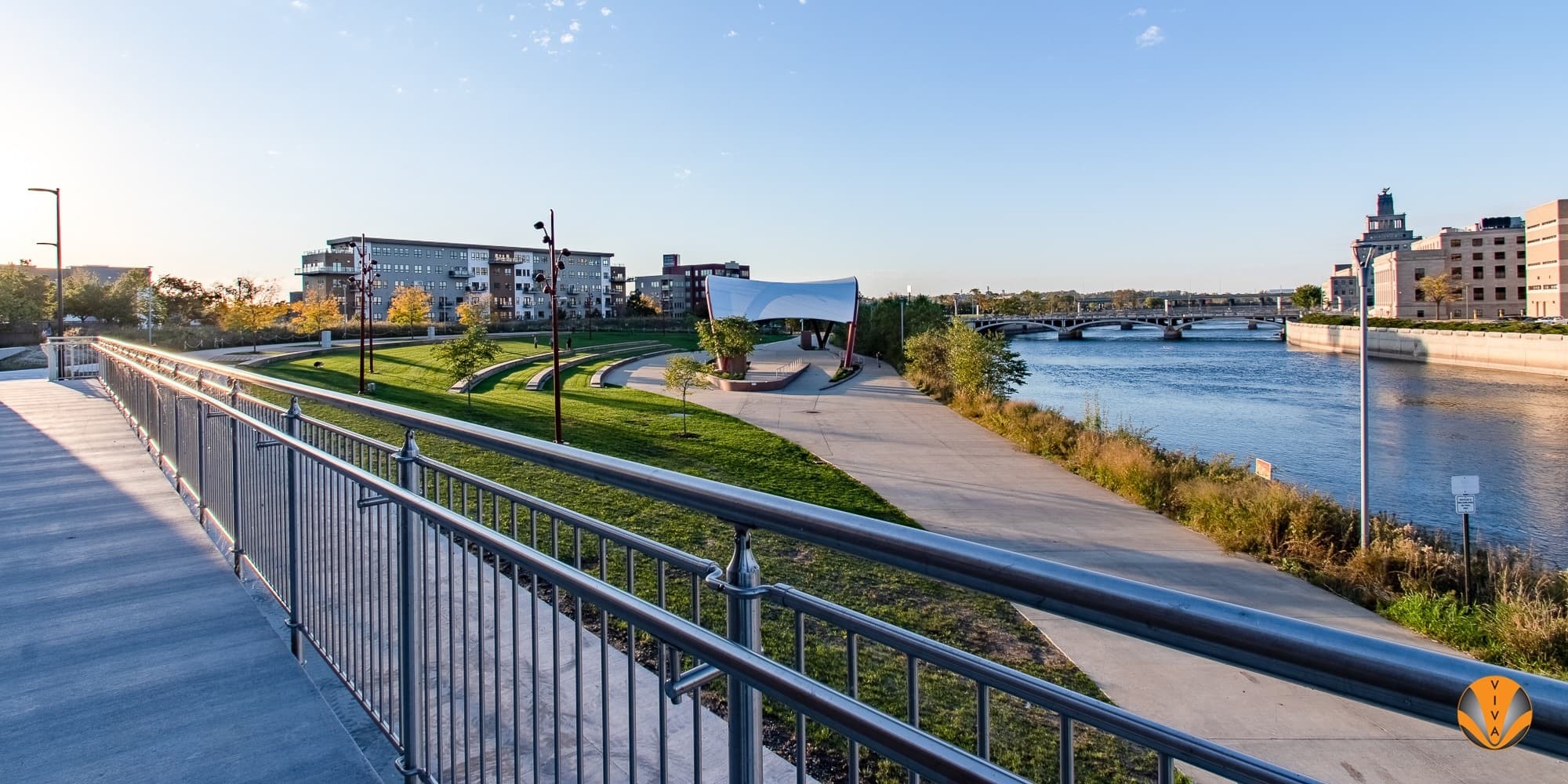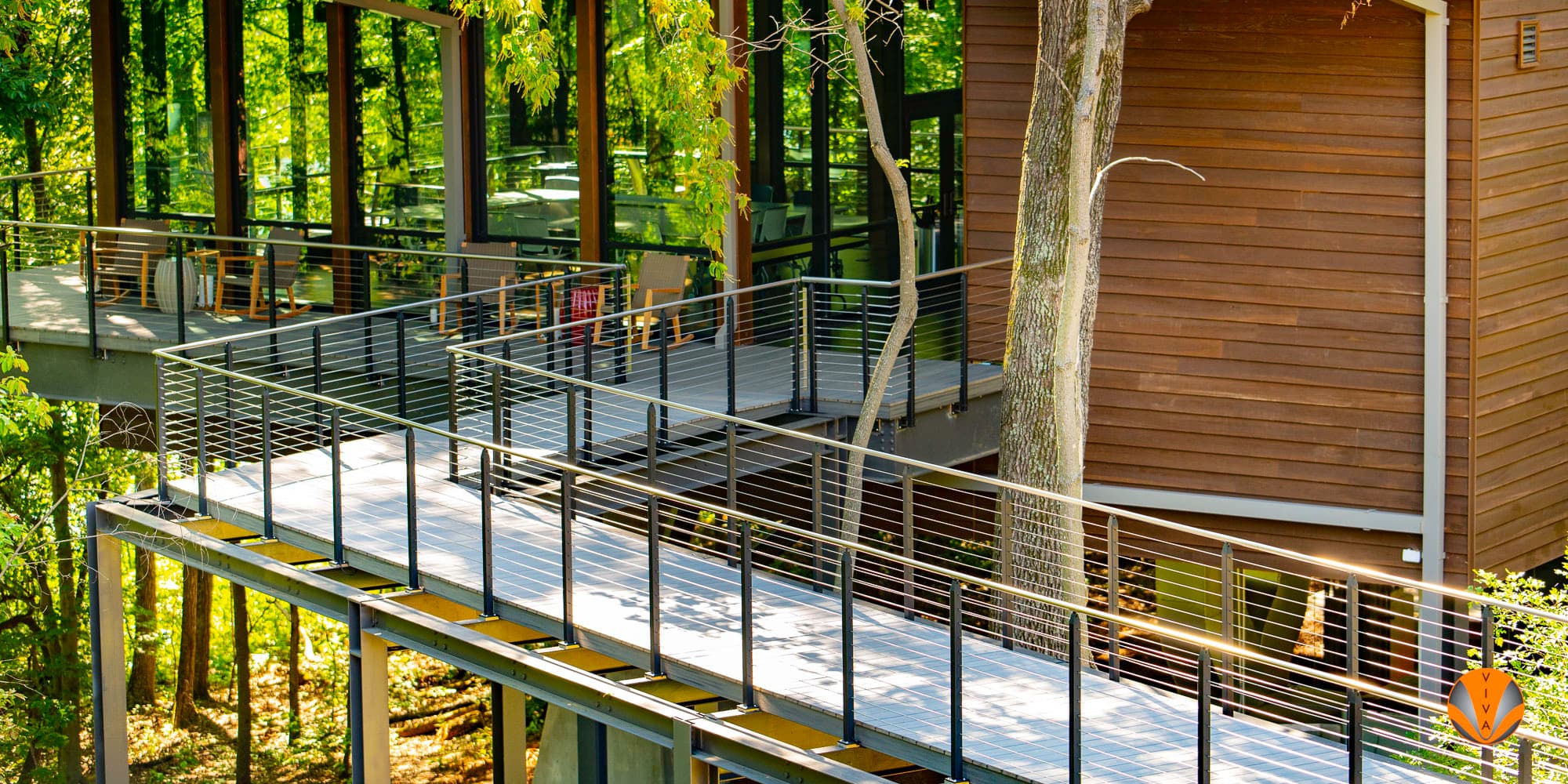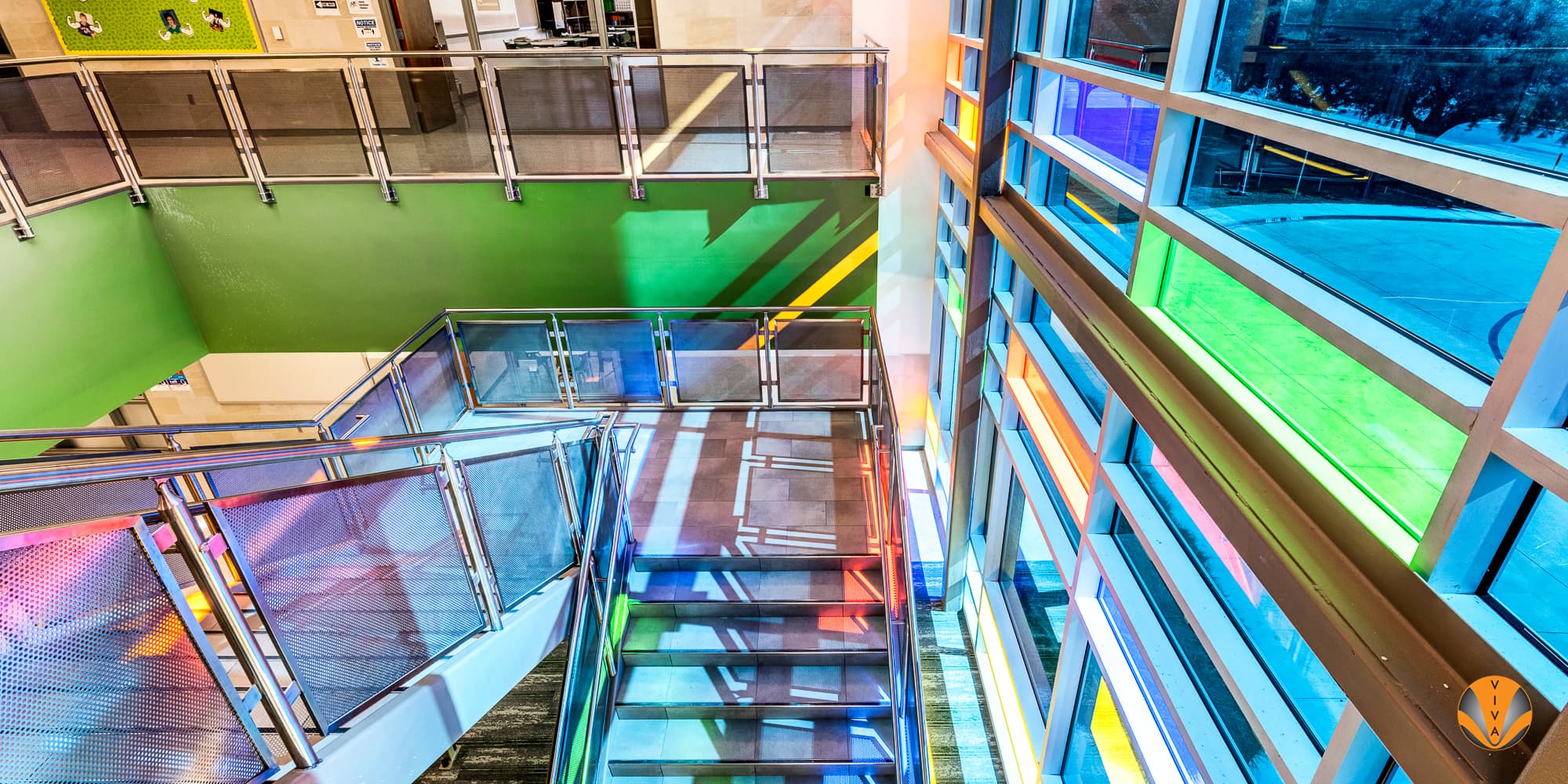Architectural design trends are always shifting, but a few continue to stand out in our modern era. The shift towards sustainable design continues to gain momentum with trends such as adaptive reuse, including biophilic elements, using energy efficient systems, and creating multi-use spaces.
1. Adaptive Reuse
Adaptive reuse is the practice of redesigning an existing building to meet new needs. It can also preserve a sense of history while moving older buildings into the 21st century in terms of energy efficiency and accessibility. Adaptive reuse is a multi-faceted process that can help reduce carbon emissions compared to constructing a totally new building.
In older buildings that pre-date accessibility standards, work should be done to update the structure to meet new standards and regulations. Adding ramps, elevators, ADA compliant handrails, and energy efficient HVAC systems and lighting to historic or culturally significant buildings can preserve a sense of history while being kinder to the modern environment.
2. Biophilic Elements
As more and more designs and processes take the environment into account, trends in architecture continue to lean towards incorporating biophilic elements and eco-friendly materials and manufacturing. Biophilic design often brings to mind a space filled with plants, and while this may be the case, it can also mean incorporating other natural elements and materials such as wood and cross-laminated timber, stone, and clay as well as designing the structure to encourage natural light and including water features.
3. Multi-Use Spaces

A necessity of a multi-use space, one that hosts a range of people for different purposes, is accessibility. Elements that can aid in making a space accessible for all include barrier-free access via ramps, elevators, and widened doorways, ADA compliant handrails, flexible configurations, and others that create a space that is easily reconfigured for the current purpose.
Multi-use spaces benefit from flexible systems that offer a range of benefits in one product. For example, our MetalSpaces systems can act as exterior facades that filter light potentially impacting heating and cooling costs, or they can be incorporated in the interior design to act as a noise reduction and privacy system.
4. Energy Efficiency

Designing and building structures that are energy efficient is one of the leading architecture industry trends. And while this can happen on a large scale by installing insulation and Energy Star products, it can also happen on a smaller scale. For instance, including LED lighting in handrail designs can increase visibility while also using an energy efficient lighting source.
VIVA Railings iRail LED Illuminated Railing systems incorporate three options for LED lighting with our iRailTM Linear, and iRailTM Pods. They offer the choice of diffused warm or bright white lighting and integrate seamlessly with our modular railing systems. Our perforated metal infill panels can also help increase energy efficiency and block UV light.
5. Modular Elements

To facilitate efficient construction, contemporary trends in architecture lean towards incorporating modular elements. This entails constructing certain components off-site and transporting them to the site where they are assembled in their final configuration. This is the case with VIVA’s railing systems. Our pre-engineered systems come to the site installation-ready which facilitates increased installation speed.
6. Aligning Design and Purpose
In the designs of the 80s and 90s, many of the trends focused on similarity in designs — the same color schemes, patterns, and elements. One of the 2025 trends in architecture is designing a space that seamlessly fits with its purpose.

For instance, the exterior facade of the CSU Water Resource Center is reminiscent of water splashing up from the ground and extending into a wave of bubbles.

The interior features an undulating pattern on the floor that’s carried into the curve of the SHOETM Glass Railing System featured on the spiral staircase and on the guards that curve along the balconies.
Another example of aligning design with purpose is at the Denton ISD Strickland Middle School where the choices create an exciting and vibrant atmosphere that contrasts sterile school environments of the past.

The colored glass panels create a playful colorscape on the CIRCA® Perf Railing System and, combined with bright paint colors, creates a space that encourages excitement and creativity.
VIVA Railings Support Architectural Trends of 2025
VIVA Railings are pre-engineered modular railings that meet ADA standards for accessibility. Our railings also incorporate other architectural trends, like energy efficient LED lighting and ability to work in a variety of applications including multi-use spaces.
Our railings offer a modern aesthetic with many opportunities for customization, including the type of infill, railing material, the option to include a top railing, and freestanding handrail systems that allow your design to meet current architecture market trends.
Contact the experts at VIVA Railings today to align your design with architectural trends of 2025.


